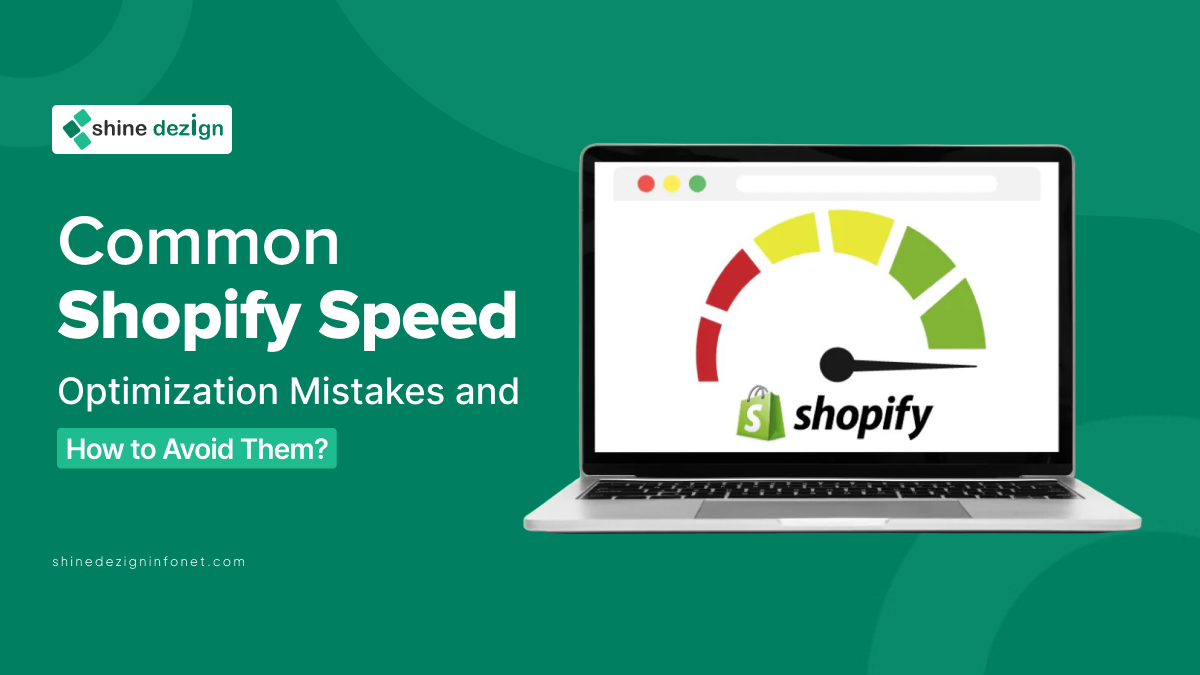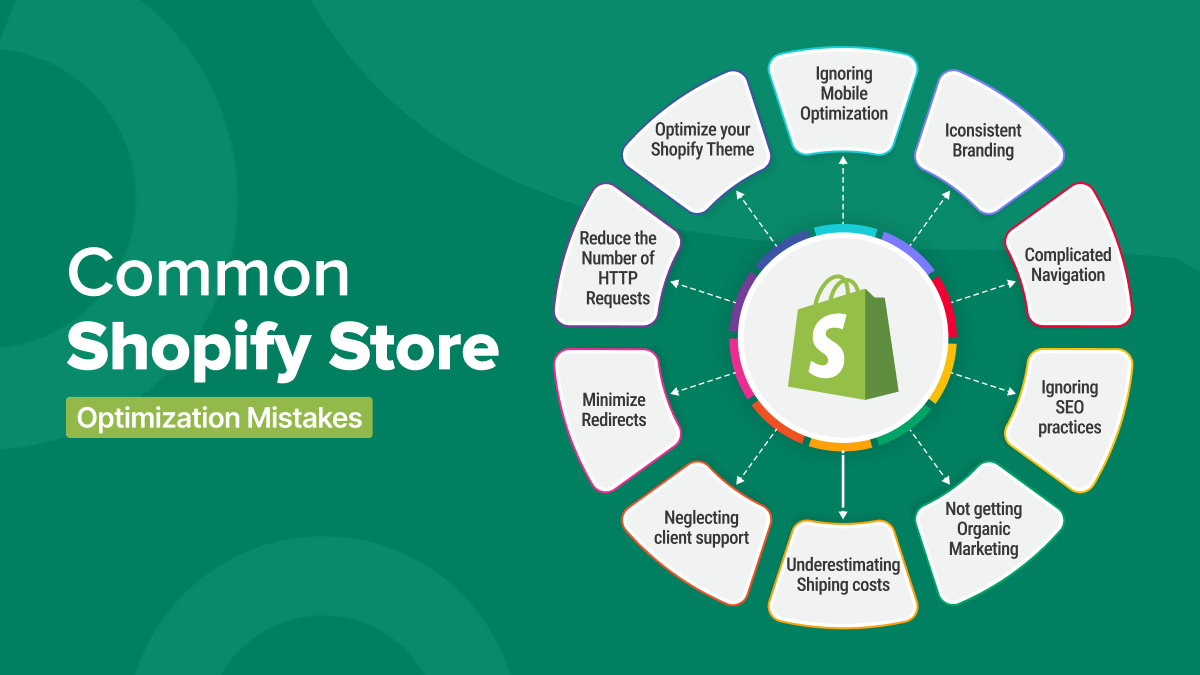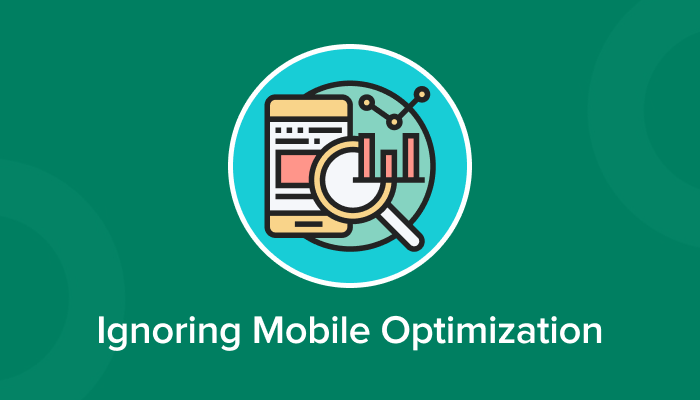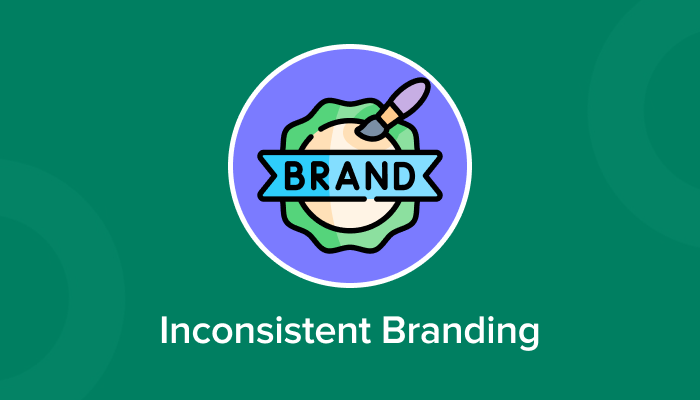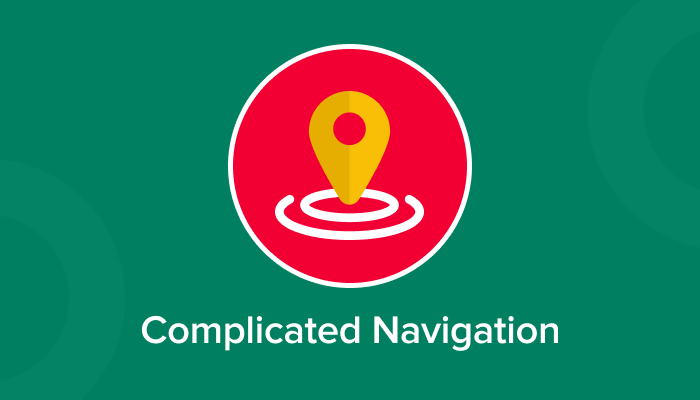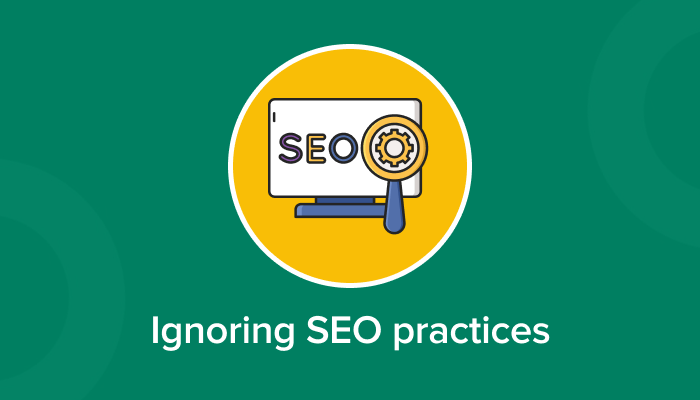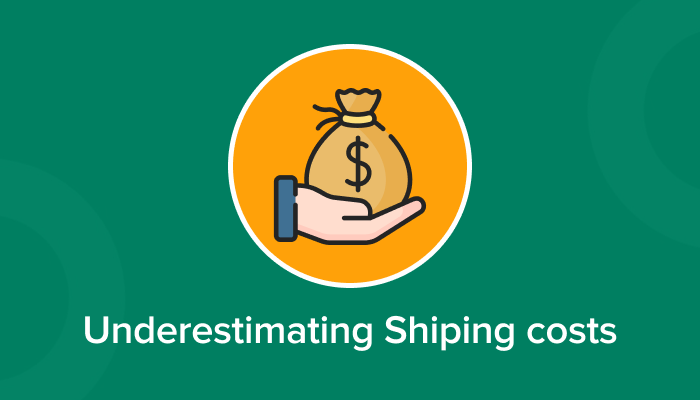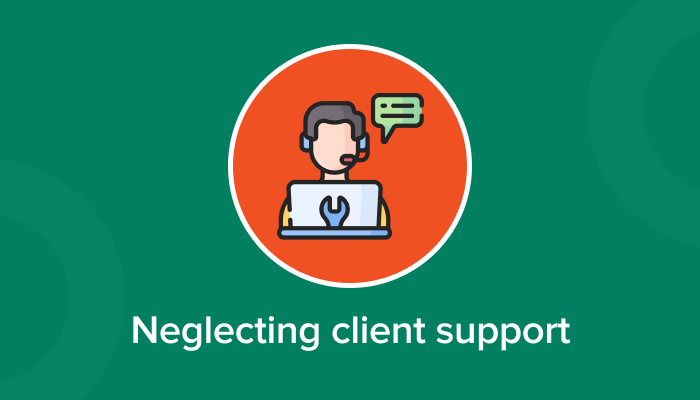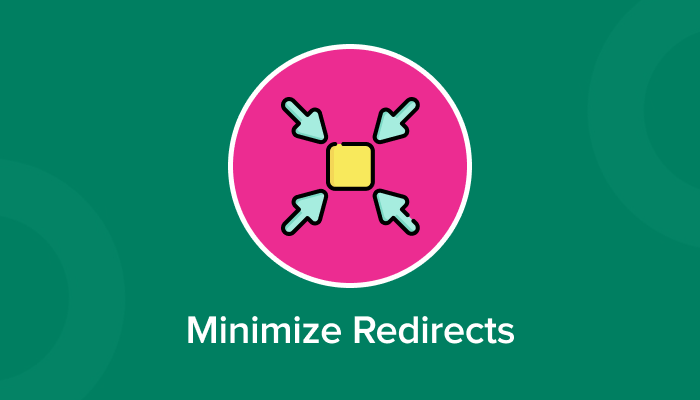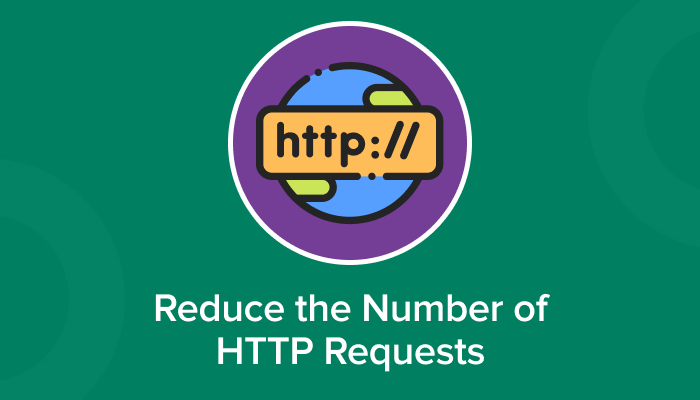Table of Contents
- Introduction
- Slow Shopify Site Speed hurts SEO.
- Common Shopify Store Optimization Mistakes
- Ignoring Mobile Optimization
- Inconsistent Branding
- Complicated Navigation
- Ignoring SEO practices
- Not getting Organic Marketing
- Underestimating Shiping costs
- Neglecting client support
- Minimize Redirects
- Optimize your Shopify Theme
- Reduce the Number of HTTP Requests
- Summing Up
eCommerce businesses know that Shopify is the best platform for developing an online eCommerce. However, creating a Shopify store will not help if your store takes more time to load.
Your website may be designed and crafted well with functionalities and features. However, its Shopify site speed is more than going to affect your productivity. Therefore, to keep you aware about Shopify store speed optimization we have covered this in-detailed blog that will help you to avoid common Shopify speed optimization mistakes.
Slow Shopify Site Speed hurts SEO.
Slow page speed is among Google’s vital ranking factors. Having a delayed website may lead to a lower ranking on SERP pages.
While many other aspects, like content quality and relevancy, determine Shopify’s site’s ranking over rallies, site speed plays a vital role. Therefore, potential clients will struggle to discover your Shop. This will increase your bounce rate and fail to attract your customer site visitors.
Let’s Explore Common Shopify Speed Optimization Mistakes
1. Ignoring Mobile Optimization
Mobile optimization is among the topmost factors, as most eCommerce traffic comes from mobile. It will help you to increase your store’s visibility and boost sales revenue.
So, if your store is mobile-optimized, it can lead to faster load times, better user experience, and fewer navigation issues. Therefore, make sure your site is responsive and user-friendly across different devices.
2. Inconsistent Branding
Non-attractive design and large images will undoubtedly slow your site. Also, inconsistent branding and unclear messaging can confuse clients and dilute your brand identity. Maintaining brand consistency across all store elements boosts credibility and client satisfaction.
Suppose your Shopify store presents a visually appealing store, but your social media platforms and marketing materials highlight outdated or conflicting designs. In that case, this can make your clients feel disconnected from your brand’s credibility.
Therefore, consistency may lead to clarity among the target audience about the brand’s identity and product type. Also, if you are uploading elements in large sizes, then it will lower your Shopify site speed.
3. Complicated Navigation
Messy and cluttered navigation menus can irritate and frustrate visitors and increase bounce rates, which results in huge losses for your Shopify store.
So, let’s consider whether your Shopify store has ample menus and categories. If not, it will create a mess for users when finding products seamlessly. Such a complex navigation structure leads to an unmanageable browsing experience, which leads to rising bounce rates for users.
Moreover, messy navigation menus can affect users’ accessibility. Therefore, aligning a clear and concise navigation menu can help you attract and retain clients, ultimately boosting your Shopify Store’s success.
4. Ignoring SEO practices
The most common mistake is ignoring Shopify SEO practices. Poor Shopify site optimization results in lower search engine rankings, reduced visibility, and fewer organic visitors.
With less traffic, fewer users engage with your site, leading to decreased opportunities for conversion. Whether implementing local SEO, international SEO, or optimizing product descriptions, titles, and meta tags, these efforts can help potential clients search for the services or products you offer.
5. Not getting Organic Marketing
Failing to analyze client behavior and sales data means missing valuable insights. Review Shopify analytics regularly to understand client preferences and make informed decisions.
Without an effective organic marketing strategy, which combines different methods like referral marketing, Influencer collaborations, content marketing, and social media engagement. You cannot even enhance your brand visibility. Also, with fewer visitors exposed to your products or content, the chances of conversions decrease, impacting sales.
6. Underestimating shipping costs
Another common Shopify mistake is restricting payment or Shipping options, which can deter potential clients. Shopify provides payment gateways and Shipping choices to accommodate various preferences.
Adding multiple gateways for payments can help your clients have options at their convenience. They can select whether they want COD or to pay through any card, such as credit or debit, or their PayPal account.
Moreover, if shipping costs are higher than expected or are undisclosed until checkout, it can lead to card abandonment. Clients may feel misled or discouraged by unexpected charges, causing them to abandon their purchase.
7. Neglecting client support
Needs to be more adequate client service, or slow response times can lead to dissatisfaction. Prioritize adequate customer support to address queries and concerns promptly.
Also, paying attention to client support on your Shopify store can seriously impact conversion rates. Inadequate or slow client service responses can lead to dissatisfied clients who may abandon their purchases or voice negative feedback. Your client seeks reassurance and assistance during their Shopping experience.
8. Minimize Redirects
Redirects instruct browsers to get to a different URL than the one initially requested. When utilized effectively, redirects improve the user experience by ensuring they don’t land on broken pages.
However, when done incorrectly, it can damage the user experience, slow down your site, and confuse search engine crawlers. So, avoid unnecessary redirects that may affect Shopify’s speed optimization.
9. Optimize your Shopify Theme
A Shopify theme is another vital factor in your store. For example, if you’re using the Shopify Yuva theme, making extensive changes to its design and functionalities can potentially slow down your Shopify site..
So, it’s good to avoid unnecessary personalization, especially those that need additional scripts or heavy resources, like complex animations, which can slow down your theme. Therefore, you can utilize the theme’s built-in features and keep custom changes to a minimum.
10. Reduce the Number of HTTP Requests
HTTP requests are the messages that a web browser sends to a web server whenever someone needs to view your site. These requests can be for JavaScript files, images, or more.
So, if there are more files on the Shopify site then the more HTTP requests the browser needs to make to load them all.
Summing Up
Avoid the Shopify Speed optimization mistakes mentioned above. Therefore, always remember that the only way to optimize Shopify’s speed is through conversion rate optimization. The Shopify platform offers many opportunities to implement fast and high-quality speed optimization techniques.


